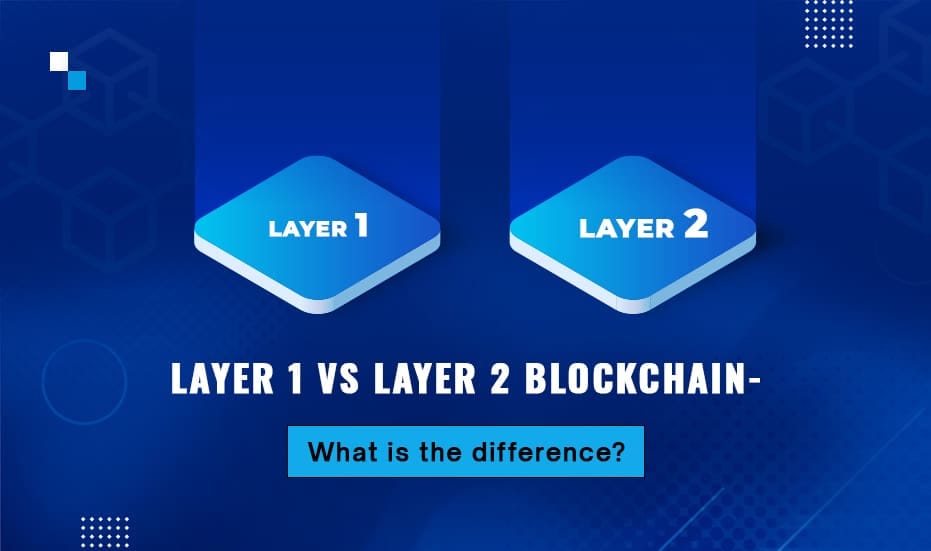Today, Blockchain growth resists dying down. Industries worldwide are adopting the technology at a lightning rate and this is what raises the importance of scalability in the Blockchain ecosystem. Although higher transaction speed and excess data handling benefits can be achieved with a few improvements in the system, the increased scalability can weaken the decentralization and security of Blockchain networks. This is known as the Blockchain trilemma.
What is the Blockchain Trilemma?
The term ‘Blockchain trilemma’ came into light by Ethereum co-founder Vitalik Buterin. The concept revolves around three different properties- decentralization, security, and scalability. Achieving the optimal level of these properties in the Blockchain is hard. Increasing one will weaken the other property of the Blockchain. This is called the Blockchain trilemma.
Today, developers focus on solving the scalability problem and the overall Blockchain trilemma, introducing remarkable solutions or ideas. One of them is Layer 1 and Layer 2 Blockchain solutions – one of the focus of attention in the debates. If you have been in the crypto space, you might have heard about these two terms.
What is Layer 1 Blockchain?
Layer 1 Blockchain network refers to the foundational protocol of the network that facilitates scalability improvements.
- Scalability is one of the biggest advantages of Layer 1 Blockchain solutions that one can experience after a few modifications in the protocol.
- Decentralization and security is also one of the major highlights of the Layer 1 Blockchain protocol.
- The ecosystem of Layer 1 is always open for improvements. One can easily integrate new tools, technological advancements, and other variables into a base protocol.
The following fundamental updates are required to achieve Layer 1 network scaling.
- Improvements to the consensus protocol
- Sharding
What is Layer 2 Blockchain?
Layer 2 Blockchain is a scaling solution that lies on the top layer of Blockchain like Ethereum or Bitcoin. This Blockchain layer accelerates transactions and reduces costs to a good extent. This Blockchain layer also resolves the scalability trilemma, shifting a load of a Blockchain protocol to an off-chain architecture. Layer 2 scaling solutions, such as nested Blockchains, state channels, etc., facilitate data processing in a much more efficient and flexible manner.
- The most highlighted benefit of the Layer 2 solution is that the modifications in the Layer 2 solution don’t affect the performance or functionality of the underlying Blockchain.
- Layer 2 solutions, such as state channels, speed up the execution of multiple micro-transactions eliminating the need for minor verifications or paying unnecessary fees for such transactions.
The following is a popularly types of Layer 2 Blockchain solutions-
- Nested Blockchains
- State channels
- Sidechains
- Lightning network
Layer 1 vs Layer 2 Blockchain: The Key Difference
Here are some of the key differences between Layer 1 and Layer 2 scaling solutions for Blockchains.
- Definition
Layer 1 Blockchain solutions focus on modifying the base layer of the Blockchain architecture for improvements. For instance, one can make tweaks in the block size to handle more transactions. Users can also alter the consensus protocols for enhanced speed and efficiency. On the other hand, Layer 2 Blockchain is a secondary protocol built on top of the existing Blockchain system and solves the scalability and speed problem of cryptocurrency networks.
- Types of Solutions
Sharding and consensus protocol enhancement are two common types of solutions used in Layer 1 Blockchain. Modifications in block size or block creation speed are required while scaling the Layer 1 Blockchain. Layer 2 Blockchain scaling doesn’t involve restrictions on the solutions. Any application protocol or network can function as a Layer 2 solution.
- Method of Operation
The scaling method in the Layer 1 Blockchain network focuses on modifying the core protocol, whereas Layer 2 Blockchain solutions are off-chain solutions that work independently of the primary Blockchain protocol.
- Quality
Layer 1 networks are a hub of information that can be accessed with the native token. These networks are also responsible for transaction settlement. On the other side, Layer 2 Blockchain networks offer the same functionality that Layer 1 Blockchain development provides along with some additional functionalities.
Hire us for Layer 1 and Layer 2 Blockchain Services
Schedule Free Demo
Closing Thoughts
The difference between Layer 1 and Layer 2 Blockchain shows both Blockchain networks focus on improving scalability. The original protocol layer focuses on adjustments that can make it scalable, whereas Layer 2 scaling encourages the use of third-party protocols, solutions, or networks.
Today, Blockchain developers direct their efforts toward these layers of the Blockchain in order to resolve the Blockchain trilemma. If you need any assistance in Layer 1 and Layer 2 Blockchain solutions, Antier is the right expert you can rely on for your project. The company has a breadth of experience in Layer 1 and Layer 2 scaling solutions and helped several clients across the globe utilizing its sheer expertise in the field. We are a trusted development partner with good years of experience in the Blockchain industry. Trust the expertise of our Blockchain experts and leverage Layer 1 and Layer 2 scaling solutions from us.







